“When you change the way you look at things, the things you look at change.”
~ Dyer 2009
From the very first moment we started working together as math and reading specialists, we intently focused on our respective content areas. As we planned and worked with teachers individually around reading or math lessons, we never quite saw a place for us to collaborate around the work we were doing. We typically planned in our own rooms, at our own desks, without a thought of the ways in which our work was overlapping. It wasn’t until one random day, when we started casually talking through a lesson Erin was doing with a teacher the following week, that we realized there are so many overarching big ideas across all the content areas. While our conversation started with a small word decomposition activity, it quickly transitioned into the big ideas of patterns and structure.
It was in that moment that we began to wonder if our narrowly focused planning in the past was impacting the teaching and learning happening in classrooms.
Excited about the possibilities after our conversation, we both dove into learning more about each other’s content work and brainstormed ways in which we could work more closely. It was Kylene Beers’ writing about lenses we use as readers and Alison Hintz’s work about mathematizing that inspired us to use picture books to expand our typical, narrow focus on planning. As we learned together, we began to wonder: if our thinking was framed so intently on the content we were teaching, then what implications did that have for students in the classrooms.
We wondered:
Is a student’s learning experience framed by the class period they are sitting in at the moment?
Do we, as teachers, frame a student’s learning by posting essential questions on the wall?
Do we, as teachers, limit students’ access to the learning when we have too narrow of a focus?
Do we, as teachers, limit students’ strategies for solving problems based on the unit they are studying in class at that moment?
Is there a time to frame students’ thinking on a particular idea and a time to allow them to openly notice different things?
As these wonders began to shape new ways in which we could facilitate our collaborative planning, we ultimately asked ourselves:
How can picture books provide a common experience for all learners to speak from, and make connections to, new learning?
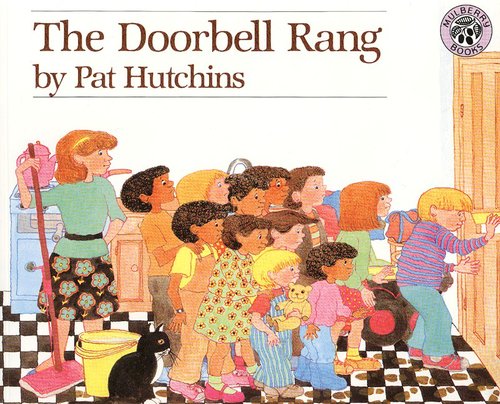 In years past, we have chosen a picture book to launch a new idea, share a particular writing style, model word choice or learn about historical events — all while setting the purpose for learning. And while all of these have a place and a purpose, if we had not outwardly stated our objective, would students make those connections to content on their own? Would they notice details from other content areas? When thinking like a student, we couldn’t help but notice details from every subject area; illustrations, patterns, order of events and so on.
In years past, we have chosen a picture book to launch a new idea, share a particular writing style, model word choice or learn about historical events — all while setting the purpose for learning. And while all of these have a place and a purpose, if we had not outwardly stated our objective, would students make those connections to content on their own? Would they notice details from other content areas? When thinking like a student, we couldn’t help but notice details from every subject area; illustrations, patterns, order of events and so on.
We began our journey of using picture books across content areas with Pat Hutchins’ book, The Doorbell Rang. In what seems to be a simple story about a mom making cookies for her children, the idea of sharing lent itself to some very complex thinking. We read the story in its entirety to allow students to enjoy the story and understand the plot. After the second reading, we gathered their thinking by asking what they noticed or wondered about the story. We were amazed by all the possible angles from which we could plan a lesson based on their thinking.
They noticed: the words or phrases repeating, every time the doorbell rang the children had to share their cookies, every time they shared the number of cookies per person was less, the kettle on the stove had more smoke as the story progressed and the children’s shoes were making a making a mess of the floor that mom was mopping.
They wondered: who was entering the door each time the doorbell rang, how many new people would enter with each ring and the very last line of the book left them wondering who could be at the door?
After that class, we met to discuss all the different ways teachers could extend student learning from the list of things students noticed. Our thinking started a list of many exciting possibilities across all content areas. For example:
Why do the kids keep saying, “No one makes cookies like Grandma!”?
What does it mean to share?
How many/much does each person get when we share?
What is the main problem of the story? Any others?
How is the problem resolved?
What can you say about the weather or time of year? How do you know?
Below is a list of possible activities across various grade levels that could be done with The Doorbell Rang.
The Doorbell Rang ELA Lesson: Repeated Sentences or Phrases
K-1 Activity:
Identify when an author may repeat words/phrases/sentences. Gather books with lots of repetition. (Example: The girl walks. The girl dances. The girl eats.) Ask students to record or highlight the words that repeat. Share with a group or whole class. Discuss why the author repeated these words.
Does it follow a pattern?
Can you think of other ways the words or phrases could be used? Continue pattern?
Grades 2-5 Activities:
Take a look back through previously read picture books or novels and take note of any repeated lines from the author or characters.
What is the significance of the author repeating sentences or phrases in a text?
Is there a connection between the repeated lines and the progression of the story?
Do the phrases or sentences help to make meaningful predictions?
As students start to take note of lines that repeat throughout a story plot, they will become more engaged with the author’s craft and better at comprehending the major and minor events of a story. This is a great opportunity for students to take a look at their own writing.
Would this writing technique help to convey ideas, plot of a story or message to their readers?
Students could work in pairs to add repetition to an unknown student’s writing piece. Gather and share in small groups to discuss if an impact was made with such changes.
The Doorbell Rang ELA Lesson: Problems in the Story
Probable Passage is an activity that has proven to be most effective before, during and even after a story has been read. I have adapted this activity from Kylene Beers’ original intention to meet the needs of early elementary learners.
I recorded phrases such as:
| Ma | we’re starving | share between yourselves | Grandma |
| doorbell rang | from next door | three each | four cousins |
| children | an enormous tray of cookies | and rang | No one makes cookies like Grandma |
K-1 Activity:
Once I shared the cover page and title of the story The Doorbell Rang, I asked students to predict which story element the above phrases best describe (Character, Setting, Problem, Solution). I also include an “unsure” group for the students to use if they are not able to commit to a story element. While students are sorting the phrases, I listen for their reasoning behind placing them in each category. Right or wrong, they have a rationale behind their thinking. You can learn so much about the connections they are making even before reading the story!
Throughout the story, we take a look back at the sorting we had completed before reading. Students are able to make revisions to their sort. For example, the phrase, “share between yourselves” may have been placed as a problem when in reality it was a solution to the problem.
At the conclusion of the story, I asked the students to take a look back at their sort and make any final changes. Again, I’m listening to their thinking as they defend any changes or declare no changes are needing to be made. Finally, I ask if there are any other cards with phrases I could add to our sorted groups. This is always so interesting because I ask that they continue to use the author’s words.
Grades 2-5 Activity:
Similar to the early learners, I suggest using the same set of phrases yet ask the students to group the cards (without category headings). Students work in pairs or groups to sort the phrases. Once the sort is complete students are asked to give each group a heading. It’s always interesting to hear the thinking behind their decisions.*Grades 4-5 may be asked to record a meaningful prediction based upon their phrase sort.
Throughout, and again at the end of the story, students are permitted to make revisions based upon their comprehension of the story. Students are asked to suggest additional phrase cards. Using all phrases, students should be able to summarize the major events of the story verbally. *Grades 4-5 should be able to partner and pair-write a summary that includes all phrases from their sort.
**It’s always so interesting to hear the argument about sharing. Some defend that sharing is THE PROBLEM of the story when others suggest that sharing is THE SOLUTION. Such a great class debate! Think of sharing in the context of this story. Is it a problem? Why or why not? Think of sharing in a different context/story/real life experience. Was sharing a problem or a solution? Explain.
The Doorbell Rang Math Content Lesson: How Many Guests? How Many Cookies?
 Grades K-2 Activity:
Grades K-2 Activity:
The book begins with 12 cookies and students quickly notice throughout the reading that the number of cookies each person is getting lessens as more people come to the door. Asking students to model what is happening to the number of cookies each person gets every time more people enter the door, is a great activity to see how students count, organize and represent numbers. They could do this with a manipulative such as tiles or chips or simply represent what is happening with paper and pencil. When they are finished, talk as a whole class about what is happening each time and elicit exact numbers from the students. Making a table on the board with the headers Number of Cookies and Number of People can help all students see how the number of cookies each person gets as more people enter lessens and by how much.
Grades 3-5 Activity:
Using the same table as described in the above activity, students could be asked to look for patterns and relationships in the number of people and number of cookies each gets. For example, when there are only 2 people, each one has 6 cookies, but when there are 4 people each one now only has three. Ask students to explain why different patterns they see are happening by asking things such as: why did the number of cookies get split in half when the number of people sharing doubled? Will that work every time?
While this book does not involve a situation in which the characters must split a single cookie, there is no reason it could not be extended into fractions based on the last line of the book. In the last page, the doorbell rings one last time; however, we do not know who, or how many people, is at the door. By asking students to guess who is at the door and how that will affect the number of cookies each child in the story gets, students will have to begin using what they know about fractions. Asking them to represent what is happening with manipulatives, or on pencil and paper, offers students the opportunity to show their reasoning and provide justification for their response.
Have you used picture books to teach math or other content areas in your classroom? We would love to hear about your experience!
About the Authors
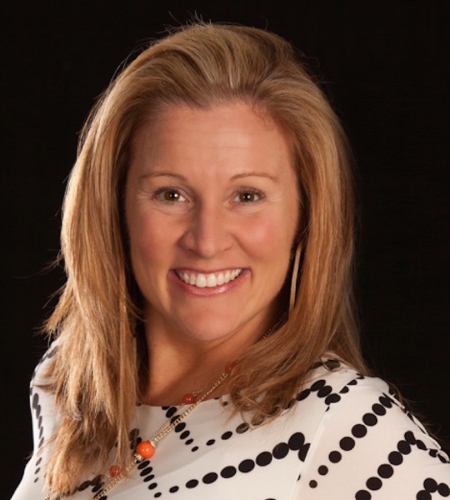 Kristin Gray, a 20-year veteran teacher of fifth, seventh, and eighth grades, is currently the kindergarten through fifth grade Mathematics Specialist at Richard A. Shields Elementary School. She is also honored to work for the Teaching Channel as a Laureate and as a curriculum writer with Illustrative Mathematics. Through the innovative use of collaborative Learning Labs, she works with teachers in classrooms to plan, implement, and reflect on teaching and learning.Outside of the classroom, Kristin has developed and facilitated mathematics professional development at district, state and national levels. Since 2013, she has presented at annual National Council of Teachers of Mathematics and National Council of Supervisors of Mathematics conferences. She collaborated in projects with Illustrative Mathematics and the Teaching Channel to develop tasks and facilitate professional development with educators across the country. As a teacher, colleague, presenter, and learner, Kristin continuously shares the value of curiosity around student thinking in her planning and instruction. To reflect on her experiences, she blogs and connects with educators through the Math Twitter Blogosphere [#MTBoS]. Kristin has a B.S. in elementary education with a concentration in mathematics from the University of Delaware and a M.Ed. in applied technology in education from Wilmington University. She is a National Board Certified Middle Childhood Generalist and 2014 Presidential Award for Excellence in Mathematics and Science Teaching.
Kristin Gray, a 20-year veteran teacher of fifth, seventh, and eighth grades, is currently the kindergarten through fifth grade Mathematics Specialist at Richard A. Shields Elementary School. She is also honored to work for the Teaching Channel as a Laureate and as a curriculum writer with Illustrative Mathematics. Through the innovative use of collaborative Learning Labs, she works with teachers in classrooms to plan, implement, and reflect on teaching and learning.Outside of the classroom, Kristin has developed and facilitated mathematics professional development at district, state and national levels. Since 2013, she has presented at annual National Council of Teachers of Mathematics and National Council of Supervisors of Mathematics conferences. She collaborated in projects with Illustrative Mathematics and the Teaching Channel to develop tasks and facilitate professional development with educators across the country. As a teacher, colleague, presenter, and learner, Kristin continuously shares the value of curiosity around student thinking in her planning and instruction. To reflect on her experiences, she blogs and connects with educators through the Math Twitter Blogosphere [#MTBoS]. Kristin has a B.S. in elementary education with a concentration in mathematics from the University of Delaware and a M.Ed. in applied technology in education from Wilmington University. She is a National Board Certified Middle Childhood Generalist and 2014 Presidential Award for Excellence in Mathematics and Science Teaching.
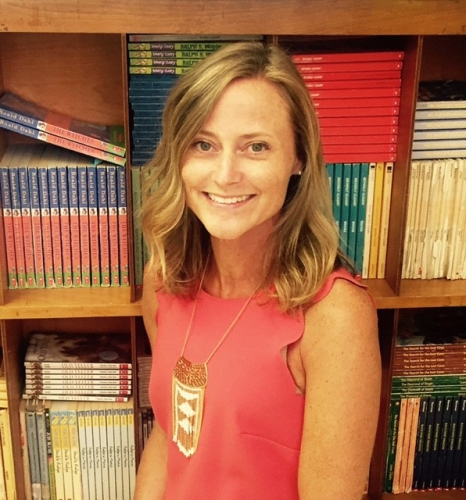




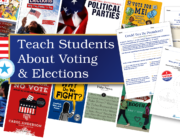
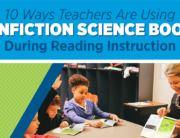
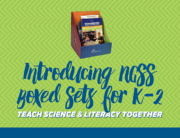
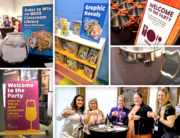
Leave A Comment